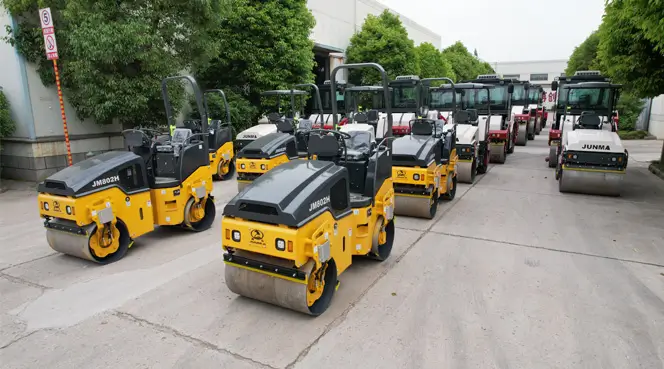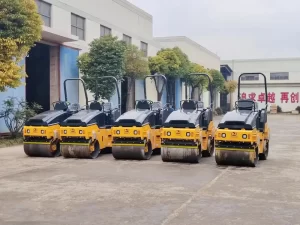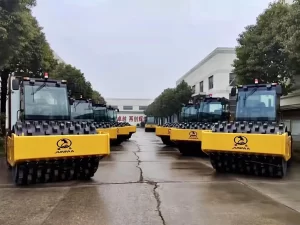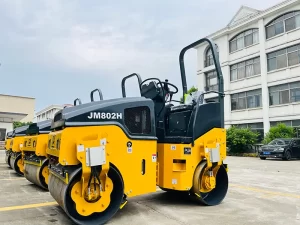Road rollers are used for compacting bulk soil and asphalt concrete when laying pavements and for other types of work. They are also suitable for compacting soil, gravel, kneading, or vibrating loose materials while constructing landfills, dams, and airports.
There are several common types of road rollers, including vibratory rollers, mechanical or pneumatic tire rollers, grid rollers, single drum rollers, double rollers, or sheep foot rollers. Different road rollers are used for various construction needs. Below is an analysis of the different classifications and selection methods of road rollers.
Common types of road rollers and their classifications:
The types of road rollers are distinguished by various technical and operational characteristics, based on the following differences:
By weight: small, light, heavy, and super-heavy.
By the physical impact and working principle: static road rollers, vibratory road rollers.
By the type of working body: Grid rollers, Sheep Foot Roller, Pneumatic rollers, Combination Roller
By the number of steel wheels: single-cylinder roller, double steel wheel roller, triple steel wheel roller.
Another method of classifying road rollers is by purpose, categorizing them into different types. Since these machines are all used for compaction, their types are precisely divided based on the type of base material they are used for:
Ground: They are used for compacting and stabilizing moving loose layers (sand, gravel, clay, rocks).
Asphalt: For leveling and compacting hot and/or cold mixtures of asphalt or asphalt concrete.
According to the weight of the road roller types, divided into:
| Roller Weight Type | Weight (T) | Application |
|---|---|---|
| Type of roller Weight | Weight (T) | Application |
| Small | 0.5 – 2.0 | Walk-behind rollers, compaction of sidewalks, and patching of asphalt and asphalt-concrete pavements. |
| Light | 3 – 5 | Mulching on sidewalks, park alleys, and stadiums; installation work in workshops |
| Heavy duty | 6 – 10 | Initial compaction of gravel, asphalt, and asphalt concrete pavements on city roads and highways |
| Heavy duty | 10 – 14 | Final compaction of gravel, asphalt, and bituminous concrete pavements |
| Extra heavy duty | 10 – 20 | Compaction of heavy gravel roadbeds and heavy-duty pavements. |
Light rollers can distribute loads of no more than 40 kN/m. They are equipped with engines that can reach up to 20 kilowatts of power. Light rollers are suitable for surfaces and areas that will not bear heavy loads. Additionally, they can be used for pre-compaction of any road surface object.
Medium rollers are equipped with engines of 20 to 30 kilowatts. They weigh between 6 and 10 tons and distribute loads of 40 to 60 kN/m. These types of rollers can be used for compacting most types of roads.
Heavy rollers belong to a heavy-duty category, weighing over 10 tons. They are equipped with engines of more than 30 kilowatts. Heavy rollers can distribute loads of more than 60 kN/m. They are used for compacting crushed stone or gravel layers, as well as asphalt or bituminous concrete pavements.
Based on the working principle, there are two types:
Static Road Rollers:
Static compact roller surfaces under gravity, achieving a smooth surface.
As they roll over materials, they compact surfaces under gravity. Available in models like double steel wheels (8-10T) and triple steel wheels (12T-15T), their heavy weight can be increased by mounting additional concrete or metal structures on the roller to enhance compaction. Ideal for areas where vibration-specific equipment can’t be used, such as overpasses, pedestrian bridges, and residential areas.
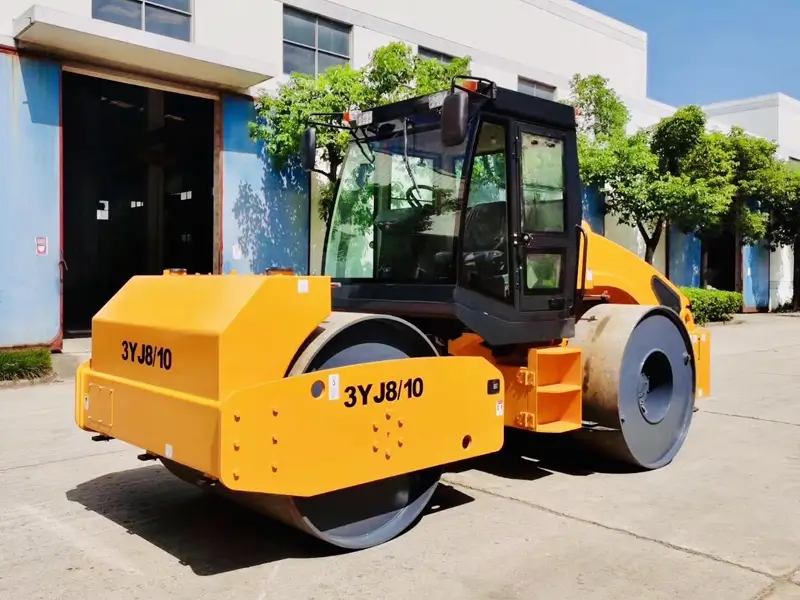
Vibratory Rollers:
Vibratory compactors consolidate the base due to their weight and vibrations produced during movement. This technology is essential for compacting automobile and airport pavements (including sublayers and top layers). If necessary, these can be equipped with bulldozer blades or rollers with bands.
Compared to static rollers, vibratory technology offers higher productivity and efficiency in soil processing, being 1.5-2 times faster. They prevent damage to soil and structural integrity by compacting through weight and vibration, effective on asphalt, concrete, and gravel.
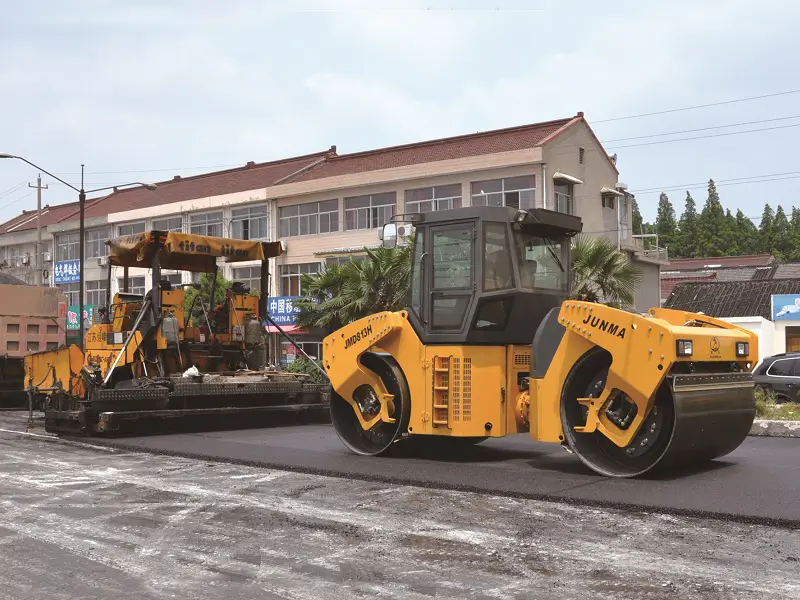
Based on the type of workbody
Smooth Drum Rollers:
Featuring wide metal wheels with smooth surfaces, they’re designed for laying asphalt and bituminous concrete. They ensure a smooth and neat surface.
Sheepsfoot Rollers
Equipped with numerous protrusions on their steel wheels, resembling goat hooves (hence the name), they’re effective for compacting hard clay and especially for compacting viscous soils and gravel layers. They mix, knead, and compact materials, ensuring uniform filling and high bonding density, commonly used in road bases, airports, and dams.
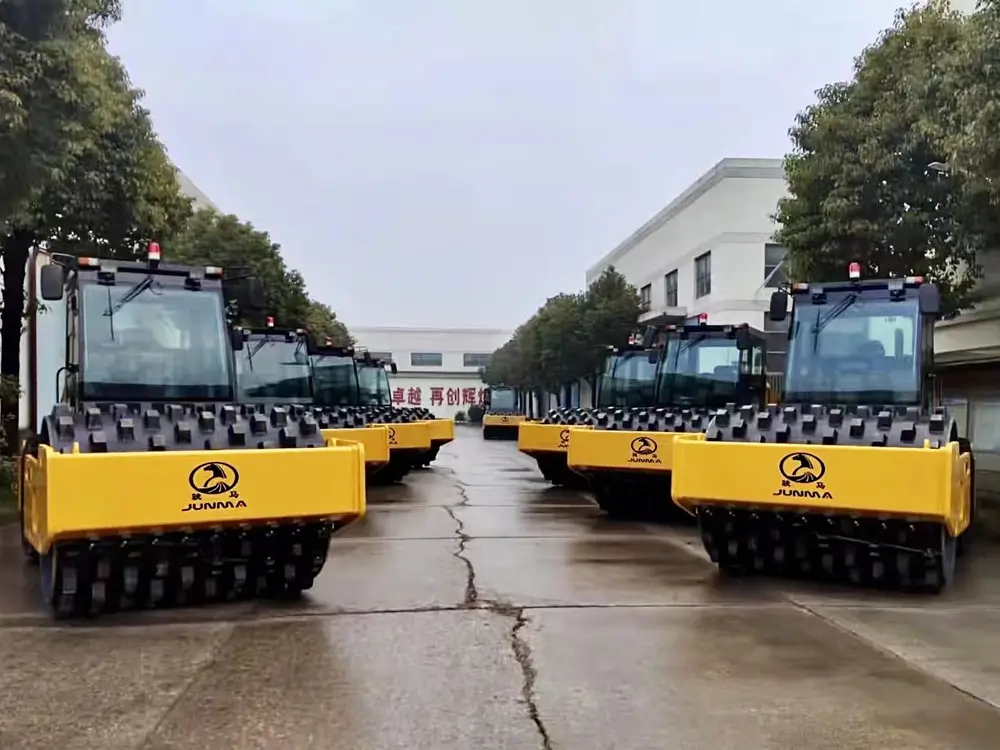
Pneumatic Tire Rollers
With several rows of rubber tires at the front or back, their unique design offers optimal pressure coverage on the surface being treated. Their pressure can be adjusted to increase or decrease compaction weight, ensuring uniform and dense compaction, and can assist in smoothing and polishing surfaces like asphalt roads and middle layers.
Combination Rollers
These machines combine two types of wheels: steel wheels in front and tires at the back, allowing for both vibratory compaction at the front and static compaction at the back. Their treadless tires provide unique flexible compaction, complementing the rigid compaction of the front wheel, greatly improving the quality of surface compaction, especially for asphalt layers.
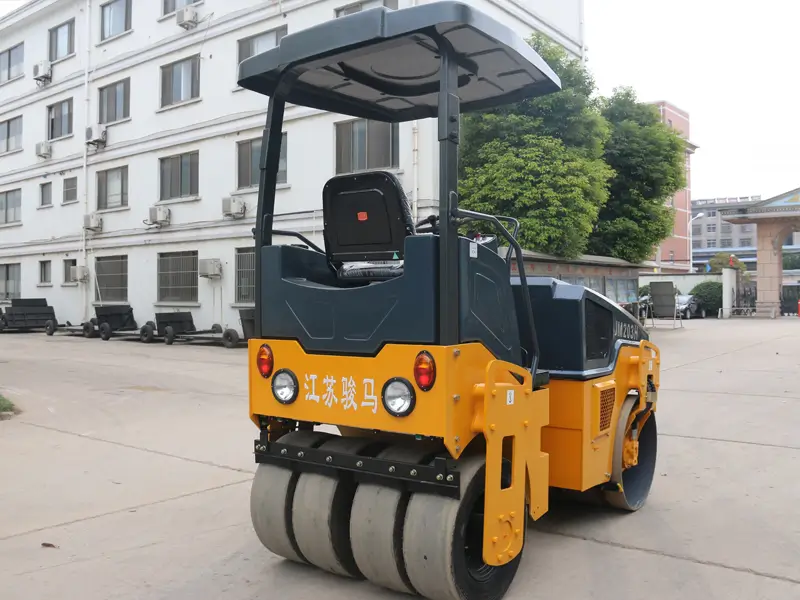
Based on the number of steel wheels, rollers can be categorized into:
Single drum roller compactor
single drum roller features a steel wheel in the front for vibrating and compacting earthworks. The vibration force is concentrated on the front wheel, resulting in high compaction strength and effectiveness. The rear wheel is made of rubber, allowing for quick movement and site transfers without needing a trailer. Characterized by a high static line load, deep compaction impact, and high work efficiency, it can effectively compact various types of non-sticky soils such as sand, gravel, crushed stone, block stone, and different types of pavement layers. It is suitable for roads, airports, embankments, seaports, dams, and other earthwork foundation compaction projects.
Double drum roller compactor
This type of roller has steel wheels at both the front and rear. It is used for compacting asphalt surfaces and backfill soil compaction. The steel wheels are equipped with mud scrapers and water spraying devices to cool the wheels during asphalt compaction and prevent asphalt from sticking to the wheels. Mainly used for compacting asphalt concrete, RCC concrete, and other surfaces, it can also be used for compaction of base courses, sub-base courses, and stabilizing layers.
Triple drum roller compactor
These rollers have three steel wheels, typically with one at the front and two special wheels at the back, designed to prevent most tire blowouts.
How to Choose the Right Roller:
Given the variety of rollers, not every construction worker can easily choose the right one for a specific purpose. Selecting the appropriate roller for a construction project is crucial for efficiently compacting different materials. Considerations include:
Project Duration:
Consider the duration of the project. Renting a roller might be more cost-effective for short-term projects, while buying might be more reasonable for long-term projects.
Soil Type:
Identify the type of soil or material to be compacted. Different soils require different types of rollers. For example:
Fine sandy soil may need a smooth steel wheel roller.
Clay might require a padfoot roller.
Engineering Material:
If using asphalt, choose either a static roller (smooth or padfoot) or a vibratory roller. Vibratory rollers can reduce voids in asphalt, making them more effective for asphalt compaction.
Surface Finish:
Consider the desired surface smoothness. For a smooth, polished surface, a smooth steel wheel roller is preferable. For a more textured surface, a padfoot roller is suitable.
Size and Weight:
Ensure the roller’s size and weight match the scale of the project. Larger rollers are suitable for large-scale road construction, while smaller rollers are more manageable in tight spaces.
Terrain and Accessibility:
Assess the terrain and accessibility of the construction site. Some rollers are better suited for uneven or sloped terrain, while others are ideal for flat surfaces.
Budget and Cost:
Consider budget constraints. Rental costs, maintenance, and operational expenses should be taken into account in the decision-making process.
Consultation:
If you’re unsure which roller is best for your project, contact us. We can provide the most suitable options for your specific construction project based on your specific needs. Moreover, always follow the manufacturer’s guidelines and safety procedures when operating a roller to ensure safe and efficient compaction results.

